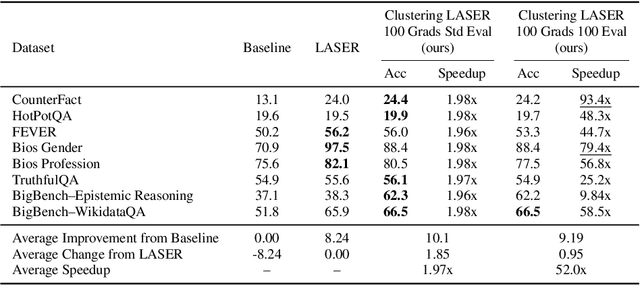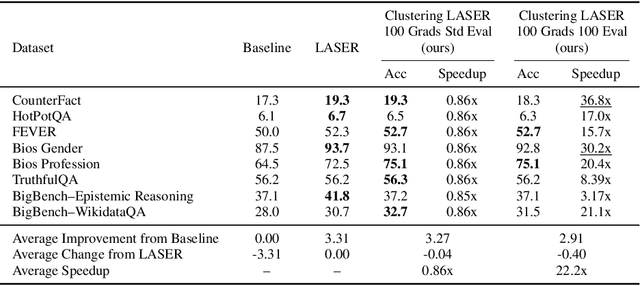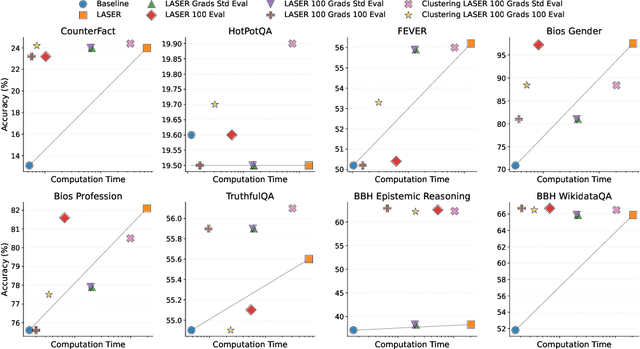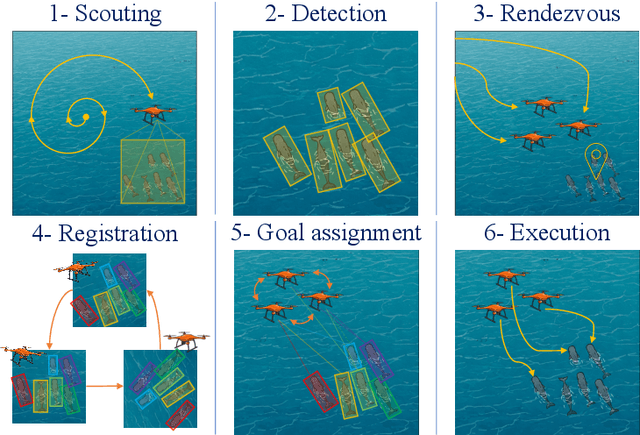Daniela Rus
ReGen: Generative Robot Simulation via Inverse Design
Nov 06, 2025Abstract:Simulation plays a key role in scaling robot learning and validating policies, but constructing simulations remains a labor-intensive process. This paper introduces ReGen, a generative simulation framework that automates simulation design via inverse design. Given a robot's behavior -- such as a motion trajectory or an objective function -- and its textual description, ReGen infers plausible scenarios and environments that could have caused the behavior. ReGen leverages large language models to synthesize scenarios by expanding a directed graph that encodes cause-and-effect relationships, relevant entities, and their properties. This structured graph is then translated into a symbolic program, which configures and executes a robot simulation environment. Our framework supports (i) augmenting simulations based on ego-agent behaviors, (ii) controllable, counterfactual scenario generation, (iii) reasoning about agent cognition and mental states, and (iv) reasoning with distinct sensing modalities, such as braking due to faulty GPS signals. We demonstrate ReGen in autonomous driving and robot manipulation tasks, generating more diverse, complex simulated environments compared to existing simulations with high success rates, and enabling controllable generation for corner cases. This approach enhances the validation of robot policies and supports data or simulation augmentation, advancing scalable robot learning for improved generalization and robustness. We provide code and example videos at: https://regen-sim.github.io/
SAFe-Copilot: Unified Shared Autonomy Framework
Nov 06, 2025Abstract:Autonomous driving systems remain brittle in rare, ambiguous, and out-of-distribution scenarios, where human driver succeed through contextual reasoning. Shared autonomy has emerged as a promising approach to mitigate such failures by incorporating human input when autonomy is uncertain. However, most existing methods restrict arbitration to low-level trajectories, which represent only geometric paths and therefore fail to preserve the underlying driving intent. We propose a unified shared autonomy framework that integrates human input and autonomous planners at a higher level of abstraction. Our method leverages Vision Language Models (VLMs) to infer driver intent from multi-modal cues -- such as driver actions and environmental context -- and to synthesize coherent strategies that mediate between human and autonomous control. We first study the framework in a mock-human setting, where it achieves perfect recall alongside high accuracy and precision. A human-subject survey further shows strong alignment, with participants agreeing with arbitration outcomes in 92% of cases. Finally, evaluation on the Bench2Drive benchmark demonstrates a substantial reduction in collision rate and improvement in overall performance compared to pure autonomy. Arbitration at the level of semantic, language-based representations emerges as a design principle for shared autonomy, enabling systems to exercise common-sense reasoning and maintain continuity with human intent.
Compress to Impress: Efficient LLM Adaptation Using a Single Gradient Step on 100 Samples
Oct 23, 2025



Abstract:Recently, Sharma et al. suggested a method called Layer-SElective-Rank reduction (LASER) which demonstrated that pruning high-order components of carefully chosen LLM's weight matrices can boost downstream accuracy -- without any gradient-based fine-tuning. Yet LASER's exhaustive, per-matrix search (each requiring full-dataset forward passes) makes it impractical for rapid deployment. We demonstrate that this overhead can be removed and find that: (i) Only a small, carefully chosen subset of matrices needs to be inspected -- eliminating the layer-by-layer sweep, (ii) The gradient of each matrix's singular values pinpoints which matrices merit reduction, (iii) Increasing the factorization search space by allowing matrices rows to cluster around multiple subspaces and then decomposing each cluster separately further reduces overfitting on the original training data and further lifts accuracy by up to 24.6 percentage points, and finally, (iv) we discover that evaluating on just 100 samples rather than the full training data -- both for computing the indicative gradients and for measuring the final accuracy -- suffices to further reduce the search time; we explain that as adaptation to downstream tasks is dominated by prompting style, not dataset size. As a result, we show that combining these findings yields a fast and robust adaptation algorithm for downstream tasks. Overall, with a single gradient step on 100 examples and a quick scan of the top candidate layers and factorization techniques, we can adapt LLMs to new datasets -- entirely without fine-tuning.
Safe Motion Planning and Control Using Predictive and Adaptive Barrier Methods for Autonomous Surface Vessels
Oct 01, 2025Abstract:Safe motion planning is essential for autonomous vessel operations, especially in challenging spaces such as narrow inland waterways. However, conventional motion planning approaches are often computationally intensive or overly conservative. This paper proposes a safe motion planning strategy combining Model Predictive Control (MPC) and Control Barrier Functions (CBFs). We introduce a time-varying inflated ellipse obstacle representation, where the inflation radius is adjusted depending on the relative position and attitude between the vessel and the obstacle. The proposed adaptive inflation reduces the conservativeness of the controller compared to traditional fixed-ellipsoid obstacle formulations. The MPC solution provides an approximate motion plan, and high-order CBFs ensure the vessel's safety using the varying inflation radius. Simulation and real-world experiments demonstrate that the proposed strategy enables the fully-actuated autonomous robot vessel to navigate through narrow spaces in real time and resolve potential deadlocks, all while ensuring safety.
Decentralized Vision-Based Autonomous Aerial Wildlife Monitoring
Aug 20, 2025



Abstract:Wildlife field operations demand efficient parallel deployment methods to identify and interact with specific individuals, enabling simultaneous collective behavioral analysis, and health and safety interventions. Previous robotics solutions approach the problem from the herd perspective, or are manually operated and limited in scale. We propose a decentralized vision-based multi-quadrotor system for wildlife monitoring that is scalable, low-bandwidth, and sensor-minimal (single onboard RGB camera). Our approach enables robust identification and tracking of large species in their natural habitat. We develop novel vision-based coordination and tracking algorithms designed for dynamic, unstructured environments without reliance on centralized communication or control. We validate our system through real-world experiments, demonstrating reliable deployment in diverse field conditions.
A Roadmap for Climate-Relevant Robotics Research
Jul 15, 2025Abstract:Climate change is one of the defining challenges of the 21st century, and many in the robotics community are looking for ways to contribute. This paper presents a roadmap for climate-relevant robotics research, identifying high-impact opportunities for collaboration between roboticists and experts across climate domains such as energy, the built environment, transportation, industry, land use, and Earth sciences. These applications include problems such as energy systems optimization, construction, precision agriculture, building envelope retrofits, autonomous trucking, and large-scale environmental monitoring. Critically, we include opportunities to apply not only physical robots but also the broader robotics toolkit - including planning, perception, control, and estimation algorithms - to climate-relevant problems. A central goal of this roadmap is to inspire new research directions and collaboration by highlighting specific, actionable problems at the intersection of robotics and climate. This work represents a collaboration between robotics researchers and domain experts in various climate disciplines, and it serves as an invitation to the robotics community to bring their expertise to bear on urgent climate priorities.
Holistic Surgical Phase Recognition with Hierarchical Input Dependent State Space Models
Jun 26, 2025Abstract:Surgical workflow analysis is essential in robot-assisted surgeries, yet the long duration of such procedures poses significant challenges for comprehensive video analysis. Recent approaches have predominantly relied on transformer models; however, their quadratic attention mechanism restricts efficient processing of lengthy surgical videos. In this paper, we propose a novel hierarchical input-dependent state space model that leverages the linear scaling property of state space models to enable decision making on full-length videos while capturing both local and global dynamics. Our framework incorporates a temporally consistent visual feature extractor, which appends a state space model head to a visual feature extractor to propagate temporal information. The proposed model consists of two key modules: a local-aggregation state space model block that effectively captures intricate local dynamics, and a global-relation state space model block that models temporal dependencies across the entire video. The model is trained using a hybrid discrete-continuous supervision strategy, where both signals of discrete phase labels and continuous phase progresses are propagated through the network. Experiments have shown that our method outperforms the current state-of-the-art methods by a large margin (+2.8% on Cholec80, +4.3% on MICCAI2016, and +12.9% on Heichole datasets). Code will be publicly available after paper acceptance.
Visual Graph Arena: Evaluating Visual Conceptualization of Vision and Multimodal Large Language Models
Jun 06, 2025Abstract:Recent advancements in multimodal large language models have driven breakthroughs in visual question answering. Yet, a critical gap persists, `conceptualization'-the ability to recognize and reason about the same concept despite variations in visual form, a basic ability of human reasoning. To address this challenge, we introduce the Visual Graph Arena (VGA), a dataset featuring six graph-based tasks designed to evaluate and improve AI systems' capacity for visual abstraction. VGA uses diverse graph layouts (e.g., Kamada-Kawai vs. planar) to test reasoning independent of visual form. Experiments with state-of-the-art vision models and multimodal LLMs reveal a striking divide: humans achieved near-perfect accuracy across tasks, while models totally failed on isomorphism detection and showed limited success in path/cycle tasks. We further identify behavioral anomalies suggesting pseudo-intelligent pattern matching rather than genuine understanding. These findings underscore fundamental limitations in current AI models for visual understanding. By isolating the challenge of representation-invariant reasoning, the VGA provides a framework to drive progress toward human-like conceptualization in AI visual models. The Visual Graph Arena is available at: \href{https://vga.csail.mit.edu/}{vga.csail.mit.edu}
ActiveDPO: Active Direct Preference Optimization for Sample-Efficient Alignment
May 25, 2025Abstract:The recent success of using human preferences to align large language models (LLMs) has significantly improved their performance in various downstream tasks like question answering, mathematical reasoning, and code generation. However,3 achieving effective LLM alignment depends on high-quality human preference datasets. Collecting these datasets requires human preference annotation, which is costly and resource-intensive, necessitating efficient active data selection methods. Existing methods either lack a strong theoretical foundation or depend on restrictive reward function assumptions (e.g., linearity). To this end, we propose an algorithm, ActiveDPO, that uses a theoretically grounded data selection criterion for non-linear reward functions while directly leveraging the LLM itself to parameterize the reward model that is used for active data selection. As a result, ActiveDPO explicitly accounts for the influence of LLM on data selection, unlike methods that select the data without considering the LLM that is being aligned, thereby leading to more effective and efficient data collection. Extensive experiments show that ActiveDPO outperforms existing methods across various models and datasets.
Learning to Dissipate Energy in Oscillatory State-Space Models
May 17, 2025Abstract:State-space models (SSMs) are a class of networks for sequence learning that benefit from fixed state size and linear complexity with respect to sequence length, contrasting the quadratic scaling of typical attention mechanisms. Inspired from observations in neuroscience, Linear Oscillatory State-Space models (LinOSS) are a recently proposed class of SSMs constructed from layers of discretized forced harmonic oscillators. Although these models perform competitively, leveraging fast parallel scans over diagonal recurrent matrices and achieving state-of-the-art performance on tasks with sequence length up to 50k, LinOSS models rely on rigid energy dissipation ("forgetting") mechanisms that are inherently coupled to the timescale of state evolution. As forgetting is a crucial mechanism for long-range reasoning, we demonstrate the representational limitations of these models and introduce Damped Linear Oscillatory State-Space models (D-LinOSS), a more general class of oscillatory SSMs that learn to dissipate latent state energy on multiple timescales. We analyze the spectral distribution of the model's recurrent matrices and prove that the SSM layers exhibit stable dynamics under simple, flexible parameterizations. D-LinOSS consistently outperforms previous LinOSS methods on long-range learning tasks, without introducing additional complexity, and simultaneously reduces the hyperparameter search space by 50%.
 Add to Chrome
Add to Chrome Add to Firefox
Add to Firefox Add to Edge
Add to Edge